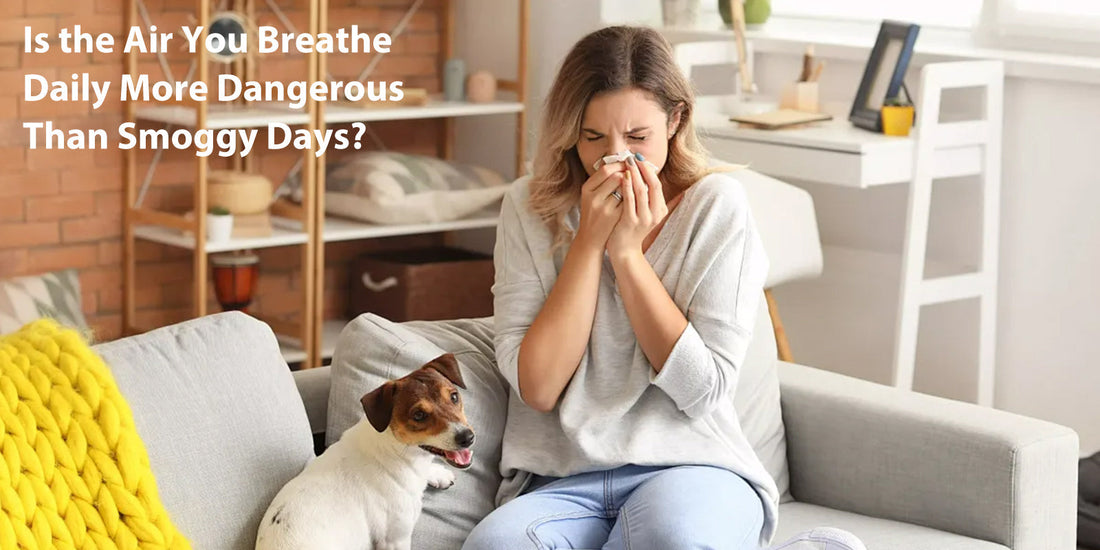In modern family life, the threat of air pollutants is often overlooked. From car exhaust to pollen in the daily environment, these invisible “silent killers” are quietly affecting the health of family members. So, how can you create an effective air protection barrier for your home? The Cobectal air purifier, equipped with its core H14 HEPA technology, offers an ideal scientific solution for addressing indoor air pollution. Its presence is not merely optional but rather a precise application of air purification principles, providing quantifiable assurance for indoor air quality.
To understand the purification capabilities of the Cobectal air purifier, it is first necessary to clarify the scientific definition of its core component, the H14 HEPA filter. Are all filters labeled as “high-efficiency filtration” capable of meeting the same standards? HEPA stands for High-Efficiency Particulate Air Filter, which is a type of filtration material that has undergone rigorous testing and certification. According to the internationally recognized European EN 1822 standard, HEPA filters are classified into multiple grades based on their filtration efficiency, with H14 being one of the highest grades. Its core performance metric is a filtration efficiency of over 99.995% for particles with an aerodynamic diameter of 0.3 microns. Particles of this size are referred to as the “most penetrating particle size” because they move randomly in the air via Brownian motion and are the hardest to capture with conventional filters. H14 HEPA filters utilize a multi-layered fiber structure to create complex channels, employing interception, inertial collision, and diffusion effects to trap these microscopic particles firmly within the filter media. This technical characteristic makes them widely applicable in stringent environments such as medical cleanrooms.

There are numerous types of pollutants in the home environment. Can the H14 HEPA filtration principle effectively address them? The composition of pollutants in the home environment is complex, including larger particles such as pet hair and dust, as well as smaller particles like PM2.5 and pollen. When air enters the Cobectal air purifier, it first passes through a pre-filter to intercept larger particles like hair, after which the H14 HEPA filter begins to play its core role. For pollen particles as small as 0.3 microns, its filtration efficiency far exceeds the 85% level of ordinary filters, effectively reducing the risk of allergic reactions in sensitive individuals. For smoke particles generated by smoking (with an average diameter of 0.1 to 1 micron), the H14 HEPA filter also demonstrates significant capture efficiency, thereby reducing the harm of secondhand smoke to family members. This multi-stage filtration mechanism enables the Cobectal air purifier to address the majority of airborne particle pollution in the home.

Is an efficient filter alone sufficient? How does the Cobectal air purifier convert the performance of H14 HEPA into actual purification results? This involves another key indicator for air purifiers—the Clean Air Delivery Rate (CADR). The Cobectal air purifier achieves a CADR value of 105 cubic meters per hour, meaning it can deliver 105 cubic meters of clean air per hour. Combined with the high-efficiency filtration capabilities of H14 HEPA, it can achieve multiple air circulation purifications per hour in an 800-square-foot space. For example, in a 20-square-meter bedroom, it can theoretically complete a full purification every 15 minutes. This efficient circulation capability ensures that the clean air filtered by H14 HEPA can promptly cover the entire space, preventing pollutants from accumulating locally.
In long-term use, how durable is the H14 HEPA filter, and is its maintenance convenient and scientifically sound? In household use, the durability and scientific soundness of H14 HEPA filter maintenance are equally important. The Cobectal air purifier is designed with an intelligent filter replacement reminder function. Depending on the level of household pollution, the typical lifespan of an H14 HEPA filter is 6–12 months. Compared to standard filters, while the H14 HEPA filter has a higher initial cost, its purification efficiency per unit time results in lower overall costs. Its maintenance process also demonstrates scientific design: users can replace the filter without specialized tools, and the filter is packaged in a sealed design (filters can be purchased at our store), preventing the re-release of captured pollutants during replacement. This detail ensures the closed-loop safety of the purification system.

Can it achieve efficient purification while also ensuring comfort for home use? The Cobectal air purifier incorporates H14 HEPA technology while also prioritizing comfort for home use. Its operating noise is kept to around 24 decibels, equivalent to the ambient noise level in a library, ensuring it does not disrupt nighttime rest. This is achieved through optimized fan impeller design and sound-insulated body structure, ensuring low-noise operation even at high CADR values. Additionally, the three timer settings align with household energy-saving needs. This balance between performance and energy consumption reflects the engineering advancements in modern air purifiers.From a scientific perspective, the combination of H14 HEPA technology and the Cobectal air purifier provides a verifiable solution for household air purification. For families, this quantifiable purification capability translates into tangible health benefits.
H14 HEPA technology, as the premium standard in air purification, has been successfully applied by Cobectal air purifiers in residential settings. This not only demonstrates the technology's widespread value but also establishes a scientific model for addressing indoor air pollution in homes. It is no longer a specialized laboratory device but has been engineered for optimization, making it a convenient and accessible health tool for every household. Choosing a Cobectal air purifier equipped with H14 HEPA technology essentially means opting for a scientifically grounded approach to household health management, transforming the abstract desire for clean air into a tangible improvement in living quality.

